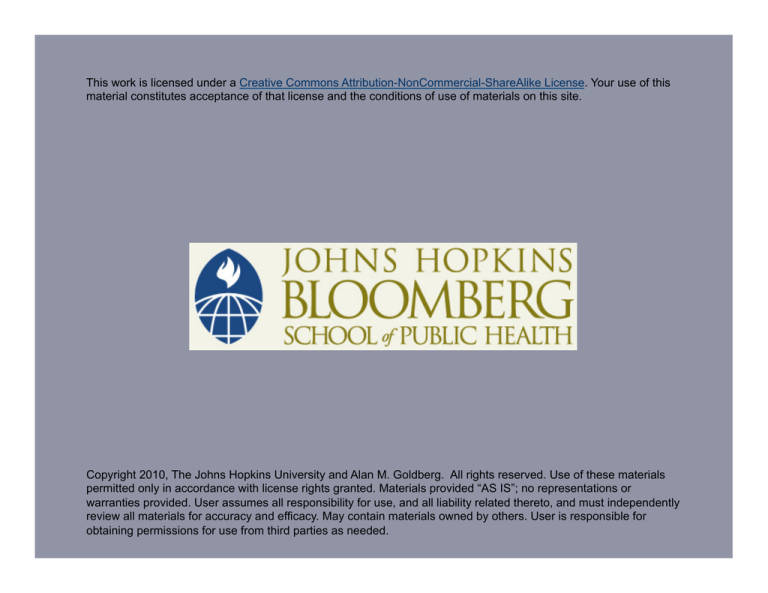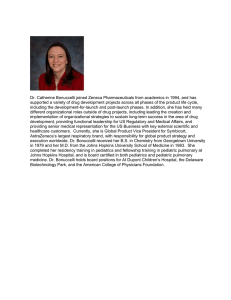
This work is licensed under a Creative Commons Attribution-NonCommercial-ShareAlike License. Your use of this
material constitutes acceptance of that license and the conditions of use of materials on this site.
Copyright 2010, The Johns Hopkins University and Alan M. Goldberg. All rights reserved. Use of these materials
permitted only in accordance with license rights granted. Materials provided “AS IS”; no representations or
warranties provided. User assumes all responsibility for use, and all liability related thereto, and must independently
review all materials for accuracy and efficacy. May contain materials owned by others. User is responsible for
obtaining permissions for use from third parties as needed.
International Issues in Humane Science
Alan M. Goldberg, PhD
Johns Hopkins University
Introduction to Alan M. Goldberg, PhD
Paul A. Locke, DrPH, MPH, JD
Johns Hopkins University
Contents
U.S.
-
Setting the stage
2006–2008: tipping point
E.U.
- Comparison: E.U. vs. U.S.
- Animal welfare
Canada
- CCAC
Japan
-
Memorial service
4
Section A
The U.S.
Setting the Stage …
Intensive care unit
Report to Congress
AAAS 1983 and 2008
6
Setting the Stage …
Intensive care unit
Report to Congress
AAAS 1983 and 2008
7
Why Now?
Number of chemicals
Diseases with unknown causes
Legislative mandate
Billions of dollars (NIH) for translational research
More humane, better science
8
Pre-2000, Post-2000, Currently
Pre-2000: clinical studies
- Thirty-five percent of clinical studies failed due to inadequate
knowledge of metabolism
Post-2000: in vitro human cells
- Five percent of clinical trials failed due to an inadequate
knowledge of metabolism
Currently: FDA requires metabolic studies of human cells in culture
9
National Toxicology Program
A National Toxicology Program: Roadmap for the 21st Century
- Specifically identifies the three Rs
- Cites AWA—minimizing pain and distress
- Requires training in humane science for all NTP investigators/
contractors
2006"
10
NAS Report—June 2007
Toxicity Testing in the 21st
Century: A Vision and Strategy
- Animal studies—time
consuming and expensive
- Lack of predictability of
animal tests
- Use of human cells in culture
- Systems biology and
pathways = mechanisms
11
EPA-NIH Memorandum of Understanding
“We propose a shift from primarily in vivo animal studies to in vitro
assays, in vivo assays with lower organisms, and computational
modeling for toxicity assessments”
Source: Science. (2008, February). Developing the science for the NAS: 21st century vision.
12
Animal Testing Won’t Disappear Overnight
“Animal testing won’t disappear overnight, but the agencies’
work signals the beginning of the end.”
— Elias Zerhouni, Director of NIH
February 2008
13




